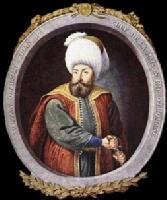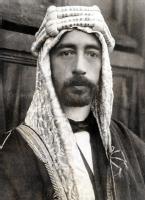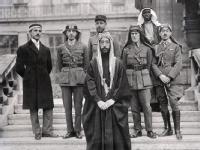Syria and the Ottomans
The Ottoman Empire is named after its first leader, Osman who began to expand his kingdom into the Byzantine Empire around the 13thc. The expansion of this empire which started in a small tribe in Anatolia was achieved through Ghazu (conquest through raids) and in the name of Islam. The Ottoman Empire ruled its territories for 600 years during which its borders expanded and shrank continuously.
Here is a map that depicts the rise and decline of the Empire (link)
The Ottoman Turks practiced Islam. However, they invaded territories where subjects practiced various religions such as Christianity, Judaism and pantheism. Although the Ottomans allowed their subjects to practice their religions, they did require non-Muslims to pay an additional tax.
They established a hierarchical social structure with the Sultan and his officials at the top, the nobles who administered the day-to-day business of the empire and who were in charge in local cities and villages came next, and at the bottom of the social structure were the peasants who worked on the farms or were employed by traders. Life under Ottoman rule was a mixture of East and West. A number of social spaces were created such as coffee shops, hammam, parks, markets, bazaars.
In 1600, the Ottoman Empire had reached its height. Istanbul, its capital was among the most prosperous cities on Earth. But in 1789, the Empire had become fragile, not only because Napoleon had invaded Egypt but also because in Russia Tsarina Catherine the Great had decided to annex all regions designated as “Ukraine” (which means in Russian, “border lands”). She famously claimed that she intended to “do away with Turkey once and for all”. Of course various rulers wanted to do away with the Ottoman Empire because they wanted access to its vast holdings (natural and strategic resources). The Ottoman Empire covered all major trade routes and its lands stood astride the crossroads of all the continents and subcontinents: Africa, Asia, India, and Europe. Europeans however, had created new trade routes that bypassed Ottoman territories and thus vast amounts of revenue began to disappear from the economy. In addition, European powers began stirring national feelings among its subjects (encouraging them to rebel and claim their independence).
The decline of the Empire is also explained by 2 factors: refusal to modernize and meteoric population increase. In fact, by 1853, the Tsar Nicholas I of Russia described it as “the sick man of Europe”. So, if we fast-forward slightly to 1911 when the Ottoman Empire is nearing death we can understand how Europe took control over the territories that we are studying on this module.
In 1911, Italy and France were in competition over Libya. The Italians attacked the Ottomans first and defeated them thus taking hold of Libya through the peace treaty. After the end of the first world war, and the signing of the Treaty of Versailles in 1919 the Ottomans lost all their territories in Syria, Palestine, Arabia and Mesopotamia. The European powers fought each other in the Middle East by encouraging revolution among the people there. The British, for example, promised Arabs independent states if they revolted against the Ottomans and aided the British. So in the aftermath of World War, there was hope of self-determination in the Middle-East.
The leader of the Arab Revolt against Ottoman Turkey was Hussein Bin Ali, King of Hejaz, Sharif and Emir of Mecca. Hussein bin Ali had 3 sons. His third son, Faisal, is interesting for understanding the context of Mina's novel. We are now in the historical time of Fragments of Memory. Faisal is the son of the leader of the leader of the Arab revolt against Ottoman Turkey. He was tall, stately, cultivated, a fairly good leader and an astute diplomat. He became king twice but he was probably one of the unluckiest monarchs in history. He is best known to us in the West because of his partnership with T.E. Lawrence, his British advisor during the Arab Revolt who became known as "Lawrence of Arabia".
Faisal was the military commander of the Revolt and he successfully occupied Damascus in 1918 effectively ending Ottoman rule there. Lawrence of Arabia was at his side through much of the conflict acting as British paymaster and arms supplier (especially since Faisal’s army was largely made up of Bedouin forces). In recognition of the invaluable help he gave to Faisal, T.E. Lawrence was taken to Versailles for the Treaty conference. Faisal tried to convince the Great Powers, particularly Britain, to live up to their promises of Arab self-determination in the Middle East. He had visions of a pan-Arab nation that encompassed the Arabian peninsula, Syria, Palestine, and Mesopotamia (Iraq) but he knew that realistically, he should negotiate for a greater Syria instead. Of course France and England had other plans for the region.
But in March 8, 1920 the National Congress proclaims King Faisal: “King of Syria in its natural boundaries from the Taurus mountains in Turkey to the Sinai desert in Egypt.” One month later, however, the San Remo conference split up King Faisal’s newly-created Arab Kingdom by placing greater Syria under a French mandate and Palestine under British rule. More significantly, in July French troops invaded and occupied Damascus, forcing the king to flee abroad. So this is where Mina’s novel begins. It is precisely at the start of the French mandate over Syria and the break-up of the short-lived Great Syrian Kingdom.




